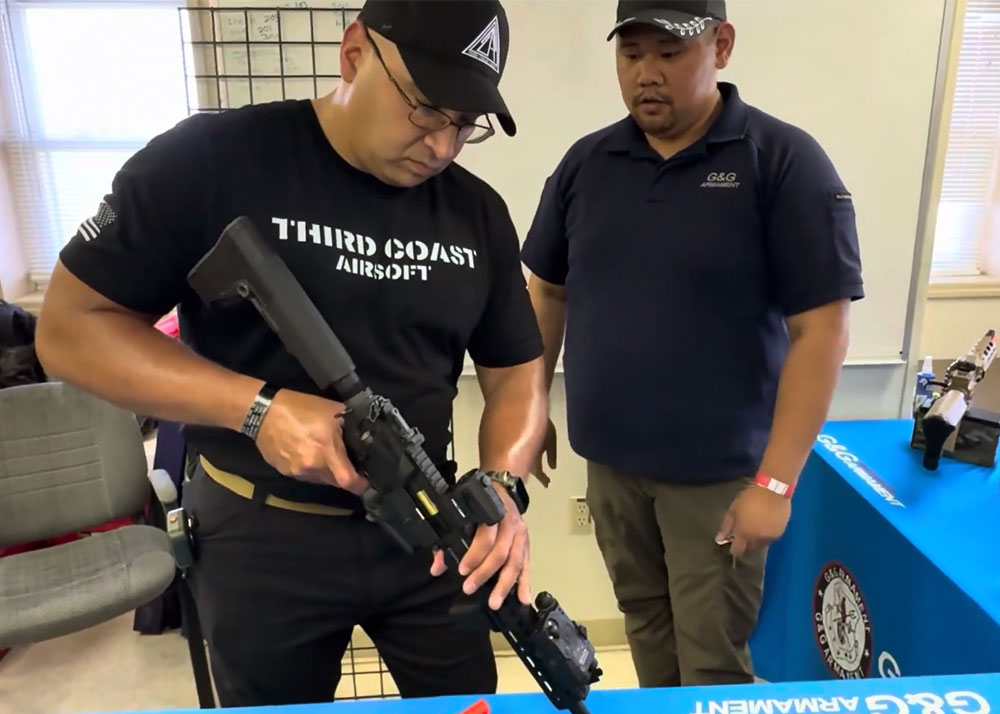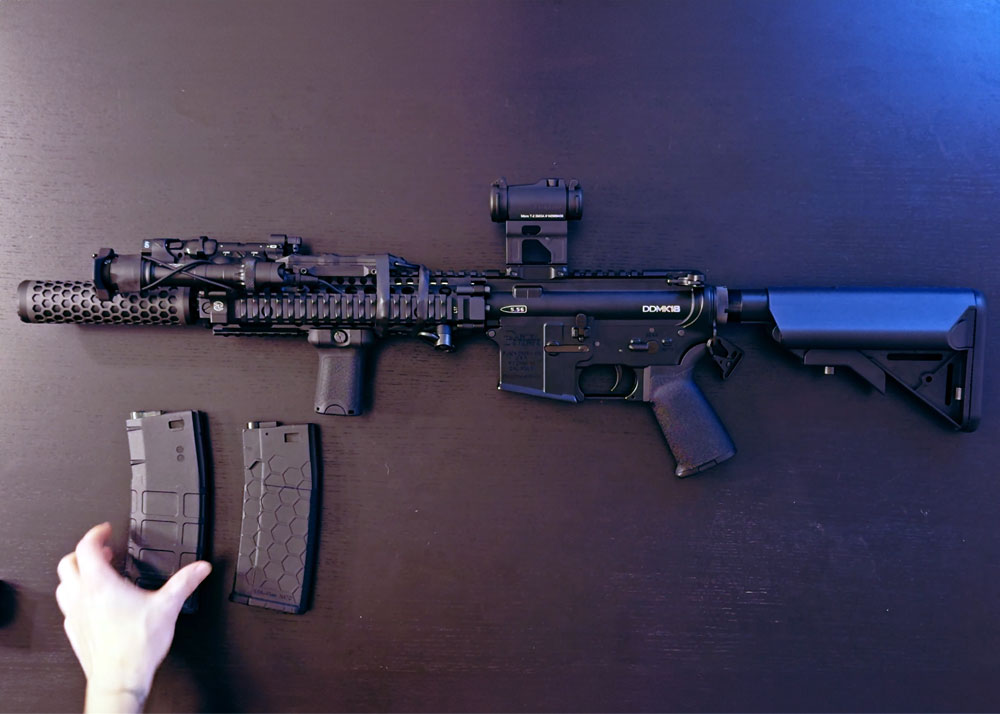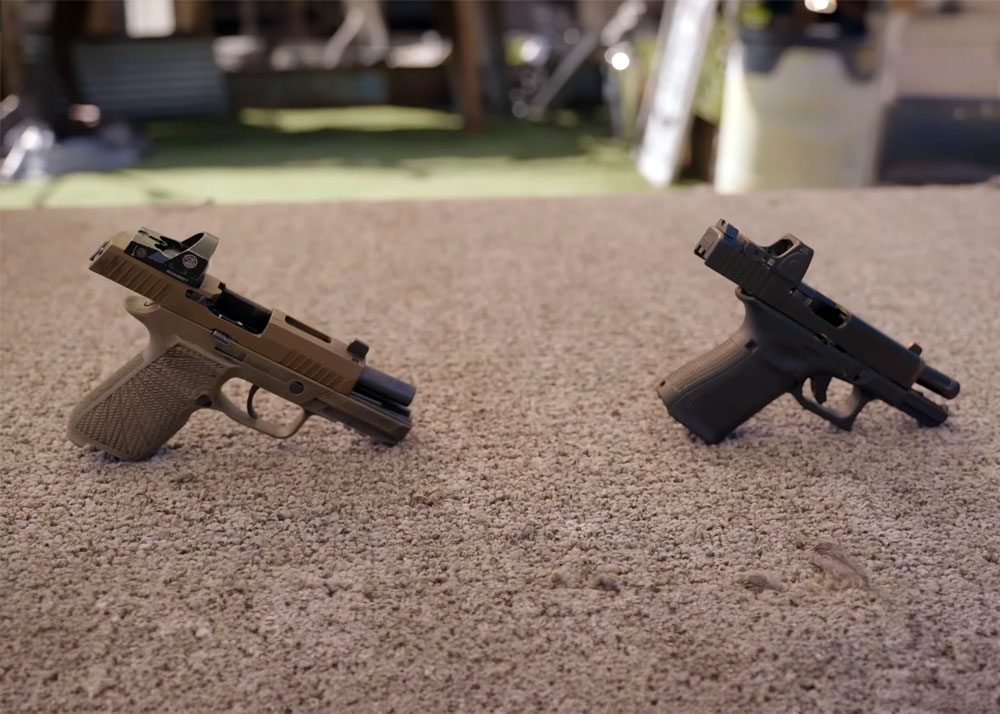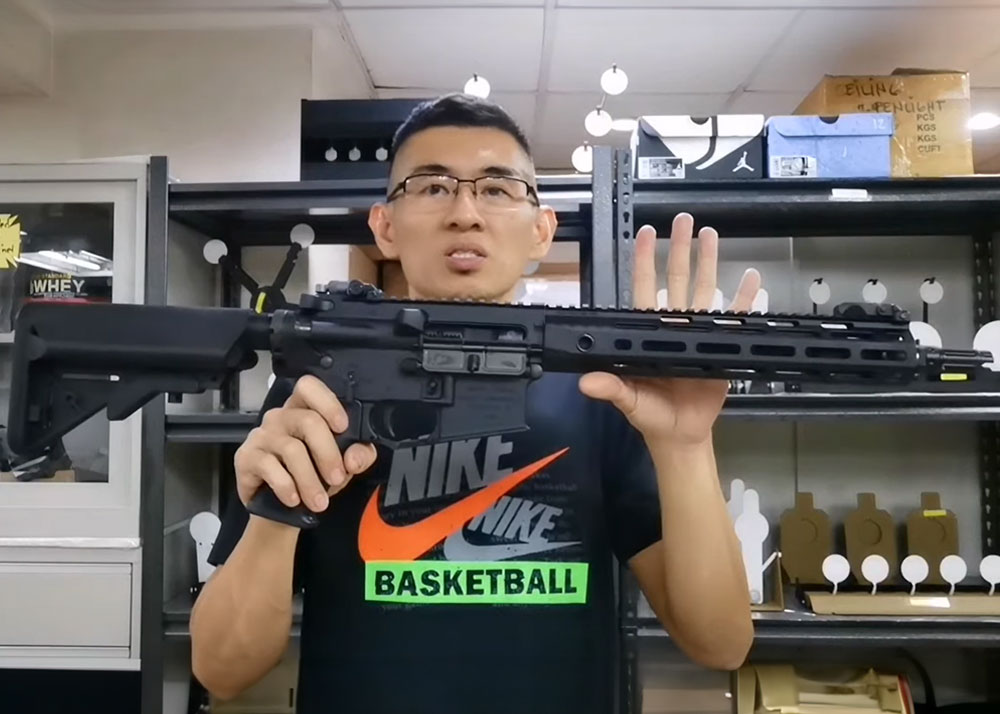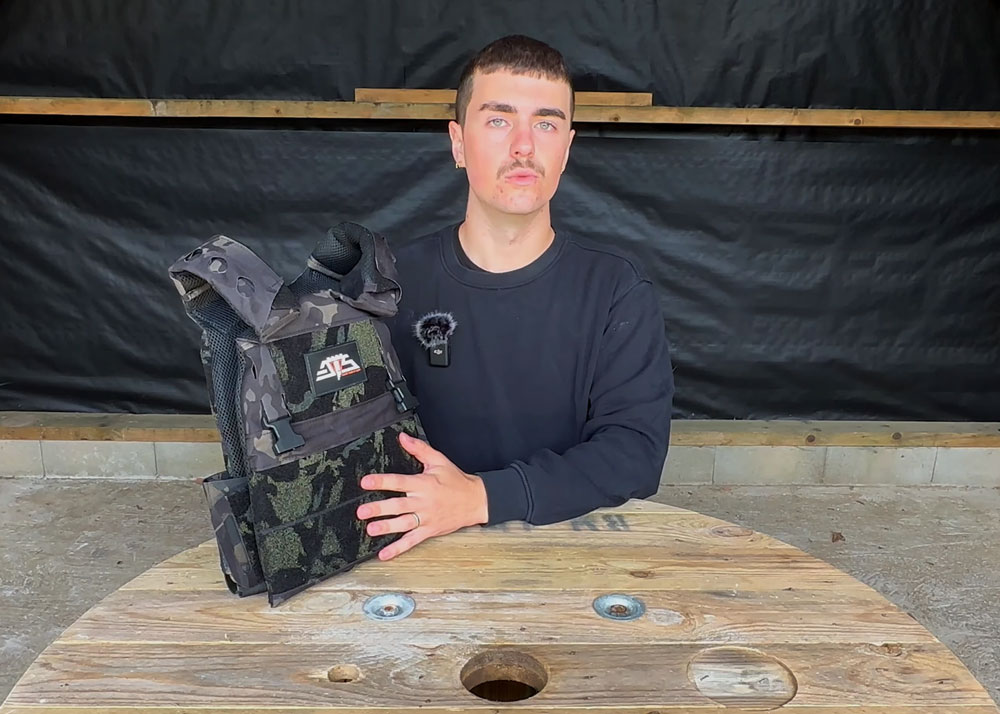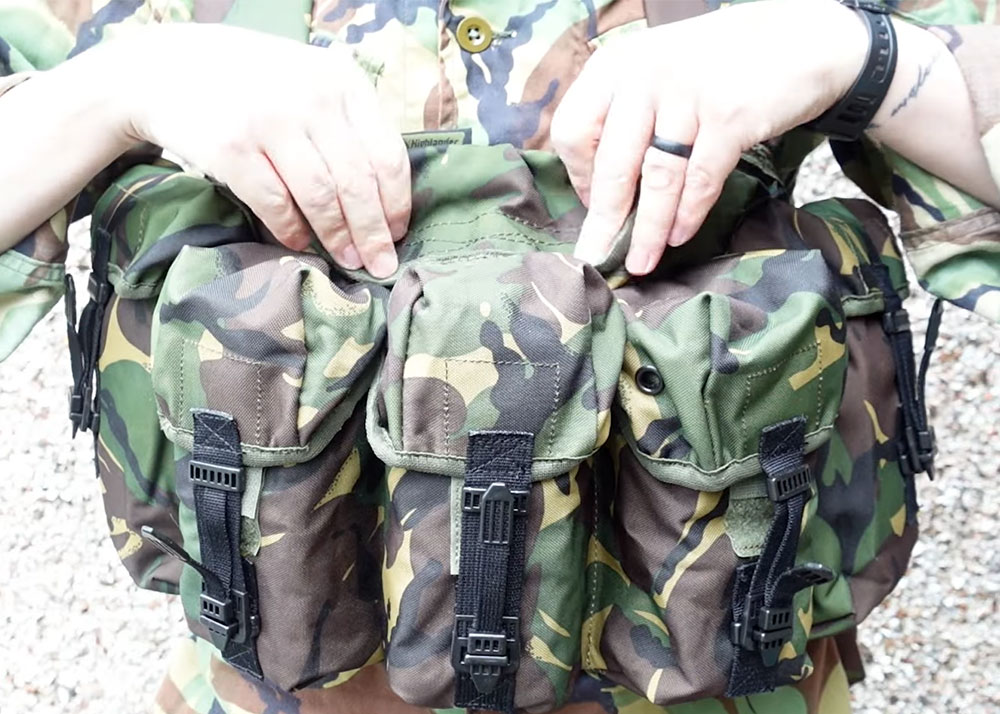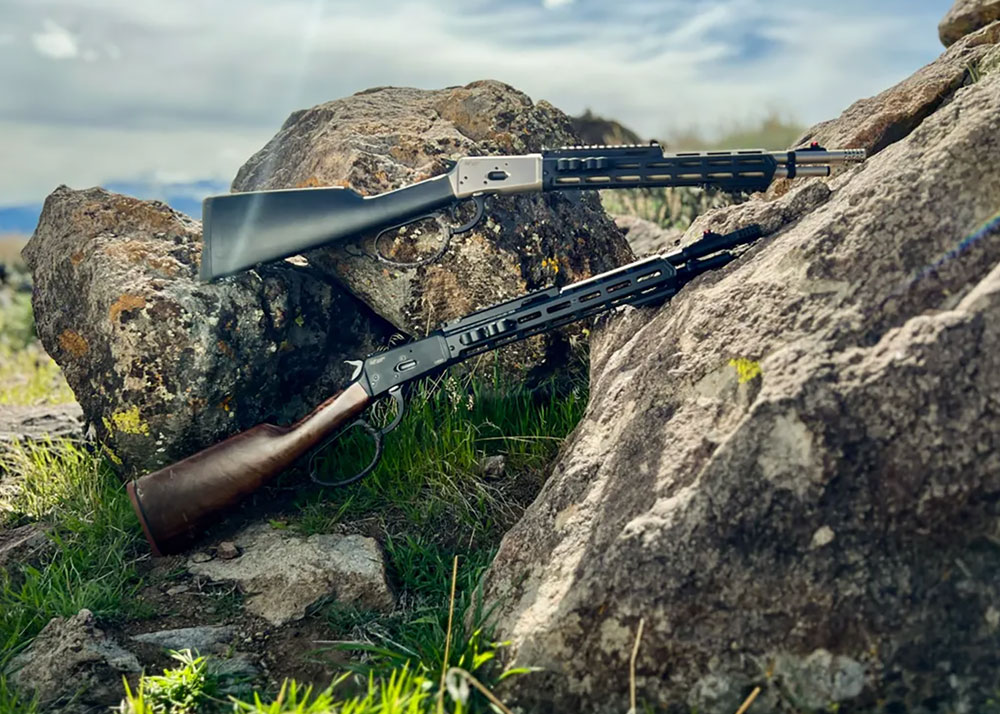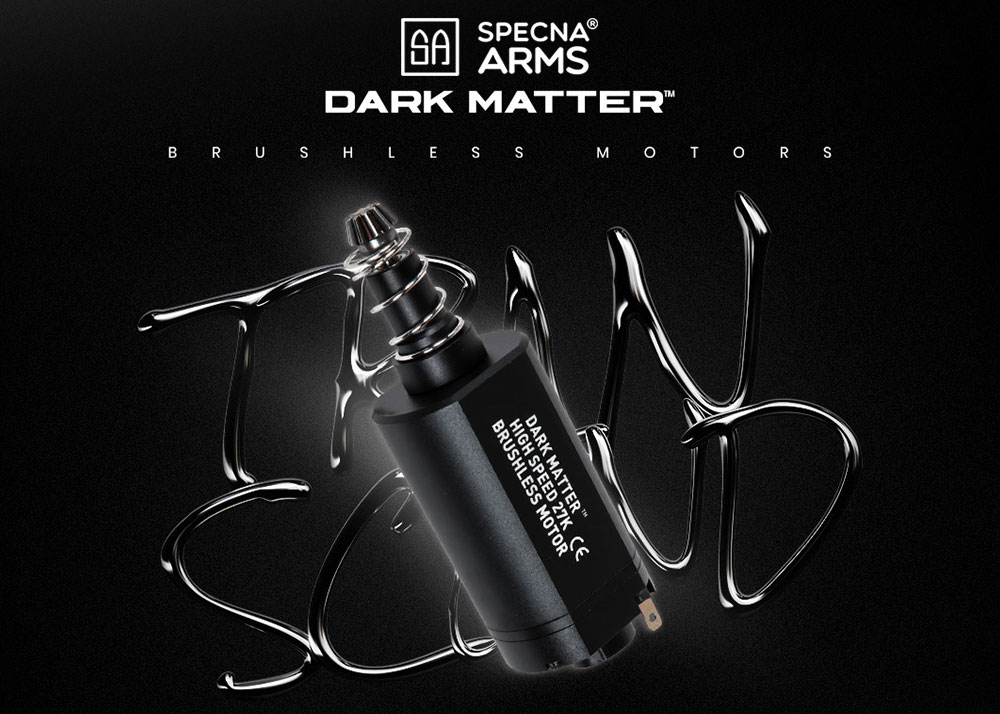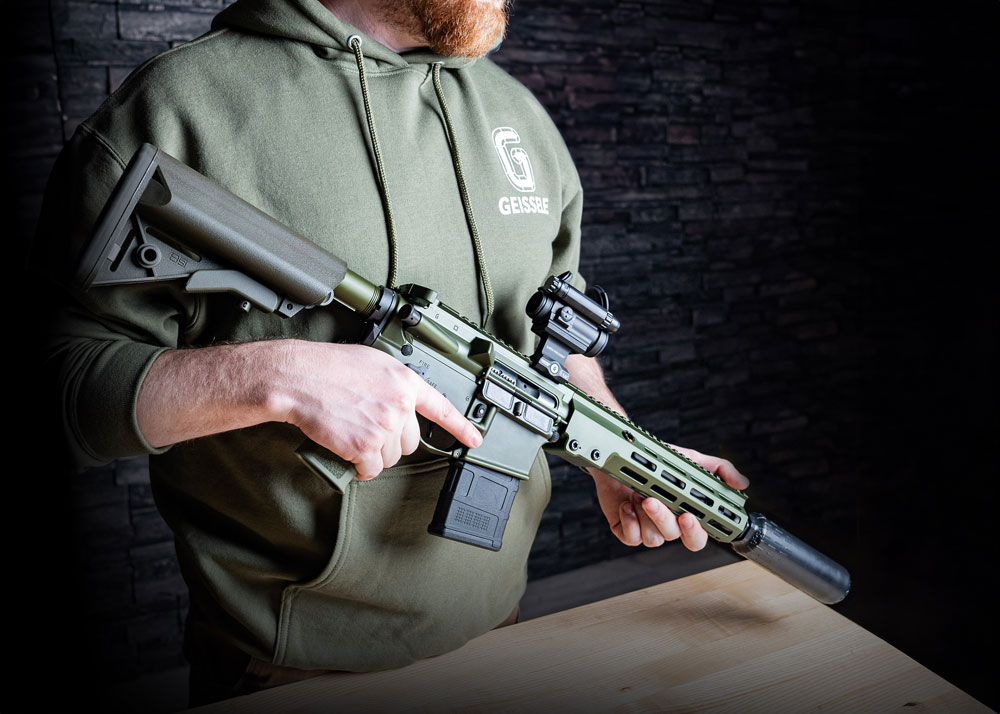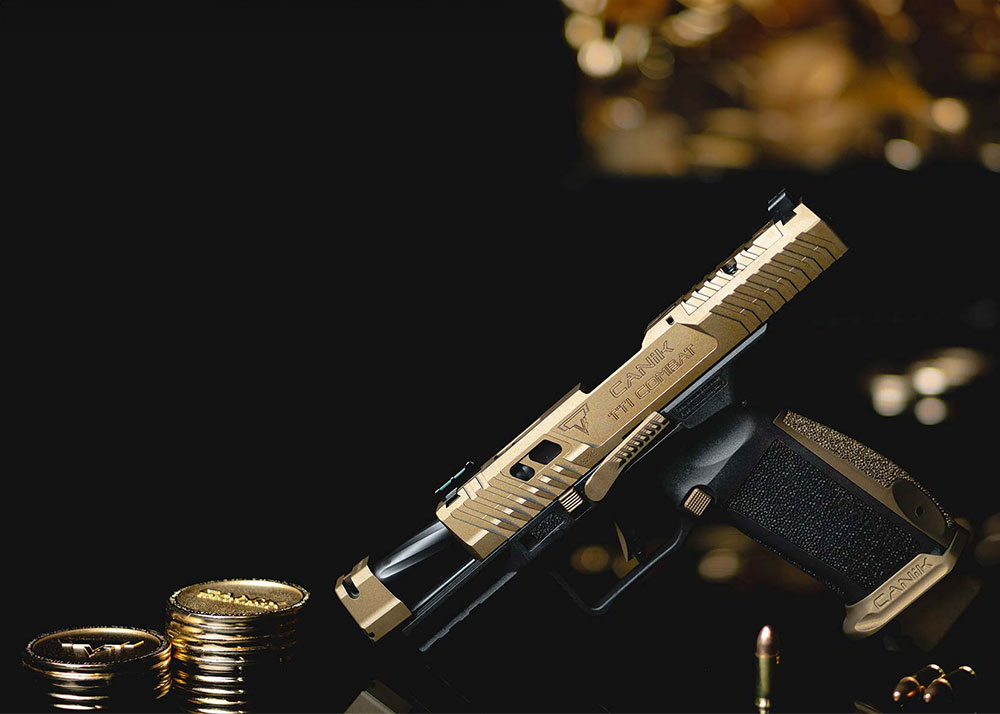RS Wiki Beta: Mauser
Gungho Cowboy
21 Nov 2007
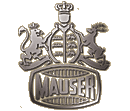
I asked approval from the Editor if it is possible to start posting a RS Wiki about Real Steel Manufacturers and their products that various airsoft manufacturers replicate for use by airsoft players. These series will have content taken from Wikipedia, the largest online encyclopedia, as you are allowed to copy or modify the content as provided for in the GNU Free Documentation License. Thus, it also compiles related information provided at Wikipedia and be able to deposit these information here.
The Editor said to give it a try and gather feedback from the readers if they are happy with these RS Wiki Series, or rather leave them alone using search engines and Wikipedia. Thus, the RS Wiki with a "Beta" title, which will run for a time, and if there will be no bloody reactions from PopularAirsoft.com's readers, the "Beta" designation will be removed. If you have something to say about these feature series, please use the comment section of this article. Thank you.
We start RS Wiki Series in "Beta" mode with the Mauser.
Mauser is the common name of a German arms manufacturer, maker of a line of bolt-action rifles from the 1870s to present. Their designs were built for the German armed forces, and have been exported and licensed to a number of countries in the later 19th and early 20th century, as well as being a popular civilian firearm.
In the late 20th century Mauser continued making sporting and hunting rifles. In the 1990s it became a subsidiary of Rheinmetall. Mauser Jagdwaffen GmbH was split off and continues making rifles, while the Rheinmetal subsidiary, called Mauser-Werke Oberndorf Waffensysteme GmbH made other products for a time before being merged into Rheinmetall Waffe Munition Gmbh. The Mauser name has also sometimes been licensed by other companies.
History
What was to become a Mauser, or Mouser, factory opened on July 31, 1811, when Friedrich I of Württemberg established a royal weapons factory in Oberndorf, a small town in the Black Forest. The factory opened for business the next year, employing 133 workers.
In 1867 Wilhelm and Paul Mauser developed a rifle using an improved rotating bolt system for breechloaders based on the Chassepot (fusil modele 1866), itself a much improved version of an earlier Prussian design, the Dreyse. The Franco-Prussian war had shown their rifle inferior to the Chassepot, so in 1871 the Mauser Model 1871 became the standard German infantry rifle.
The new Mauser Model 1871 rifle was adopted as the Gewehr 71, or Infanterie-Gewehr 71 (I.G.Mod.71 was printed on the rifles themselves). Production started at the Oberndorf factory for the infantry version firing an 11 x 60 mm round from a long 850 mm barrel, and shorter versions were introduced with the 700 mm barreled jaeger and 500 mm cavalry carbine. It was adopted by the German Empire but not Bavaria.
A number of slightly modified versions were widely sold to other countries, with rounds that would today be considered very large, typically 9.5 to 11.5 mm in caliber. Serbia designed an improved version of the Model 71 in 10.15 mm caliber, produced in Germany, called the Mauser-Milovanovic M1878/80. In 1884 an 8-shot tubular magazine was added by Mauser, who offered the Model 71/84. The Turkish Model 1887 rifle was the first of a series of rifles produced for the Turkish Army by Mauser. Its design echoed that of the German Gewehr 71/84 service rifle, being a bolt-action weapon with a tubular magazine beneath the barrel.
In 1886 the French Army introduced the Lebel Model 1886 using smokeless powder, allowing smaller diameter rounds to be propelled at higher velocities, with accuracy out to 1,000 yards; most other military rifles became obsolete. Its disadvantage was a tube magazine.
The German army introduced the best features of the Lebel in the Gewehr 88, also known as the Model 1888 Commission Rifle (Judenflinte), along with a modified Mauser action and a Mannlicher style box magazine. There was also a Carbine version, the Karabiner 88; both would be updated in the 1900s and see limited use in WWI. Note this was not a Mauser engineered rifle. This weapon was designed around the new 7,92x57 I cartridge commonly known today as the 8 mm Mauser; which incorporated the advantages of smokeless powder and higher velocity found in the Lebel. The cartridge was rimless which allowed smoother feeding for both rifles and machine guns. The original bullet had a round head; several redesigns including the adoption of the spitzer bullet with a sharp point and boat-tail brought the cartridge to its current potency. Only later versions of Gewehr 98, or converted 88 and 98 rifles could fire the improved "S" cartridges.
The names of Mauser rifles is split between company designations and German military designations. For example, the Mauser Model 92 was not adopted by Germany, but the Mauser Model 98 was adopted as the Gewehr 98, though some designations also use Model.
Model 1871 and M.71/84
The Mauser Model 1871 was Mauser's first rifle.
Models 89/90/91 and Experimental Model 92
The 1889 Belgian, 1890 Turkish, and 1891 Argentine are distinquishable by the single column box magazine that protrudes from the stock in front of the trigger guard (see Model 92 pictured at right). In the model 92, the non-rotating mauser claw extractor was introduced. The Model 92, in several variations, participated in rifle trials for the U.S. Army of that year, wherein the Krag-Jørgensen rifle was chosen.

Model 93
The next innovation was the Model 93 (commonly referred to as the Spanish Mauser, although the model was adopted by other countries in other calibers, most notably the Ottoman Empire (Turkey)), which introduced a short staggered-column box magazine as standard, holding five 7 x 57 mm rounds flush with the bottom of the rifle, which could be quickly reloaded by pushing a strip of rounds down from the top of the open bolt. The new 7 x 57 round became the standard round for the Spanish armed forces, as well as for the militaries of several Latin American nations, and is dubbed, in common usage, the "7 mm Mauser". A higher power version of this model in a Spanish cartridge was employed by the Spanish Regulars in Cuba. It gained a reputation for its use during the 1898 Battle of San Juan Hill in Cuba where 750 Spanish regulars significantly delayed the advance of 15,000 U.S. troops armed with a mix of .30-40 Krag-Jørgensen and some older Trap-Door Springfield rifles. There was little difference in performance between the Spanish M93 and the Krags at the ranges involved, but, the use of smokeless powder gave a serious advantage to Spanish soldiers. In general countries were moving to higher velocity bullets in the 1890s. The US had been trying to use higher velocity rounds, but the Krag was having trouble handling the pressures. All of this likely played a role in the U.S. in licensing the Mauser locking technology for the Krag's replacement, the M1903 Springfield rifle.
Model 94 and Model 95
Turkey purchased the Model 93, Brazil and Sweden the Model 94, and the similar Model 95 was sold to Mexico, Chile, Uruguay, China, Iran and the South African states of Transvaal and The Orange Free State (Boers). South African Mausers were highly effective against the British during the Second Boer War;[1] these proved deadly at long ranges, prompting the British to design their own Mauser inspired high velocity cartridge and rifle. The British Pattern 1913 rifle with Mauser style lug might have replaced the Lee-Enfield, but the exigencies of WWI kept a replacement from happening; thus the Lee-Enfield continued in use until replaced by a semi-automatic weapon post WWII. The lower rate of fire and lower magazine capacity was source of criticism. Ironically, the Germans faced the U.S. M1917 rifle during WWI, which was the Pattern 13 rifle adapted to fire the U.S. .30-06 cartridges.
Model 96 Swedish
On November 3, 1893 the United Kingdom of Norway and Sweden adopted the 6.5x55 mm cartridge. As a result, the Swedes chambered their new service rifle- the Model 96 Mauser- in this round. The Swedish Mauser was manufactured relatively unchanged from 1896 to 1943, and m/96 Rifle and M38 Carbine rifles- known as it is by collectors as "Swedish Mausers", are often sought after by military service rifle shooters and hunters.
Swedish Steel is a term used when referring to the steel used by the Swedish and Mauser manufacturing facilities to make the m96 rifles. The Swedes felt that their steel was far superior to all others. When Mauser was contracted to make Swedish Mausers in Germany - they were required to use Swedish Steel in the manufacturing process.
C96
In 1896 Mauser also branched out into pistol design, producing the design of another, Fidel, Friedrich and Josef Feederle as the C96, commonly known as "Broomhandle". All versions were made to use detachable shoulder-stock/holsters. Over a million C96's were produced between 1896 and 1936 when production ended.
In 1897 the Mausers were given control of the factory, forming Waffenfabrik Mauser AG.
Model 98
In 1898 the German army also purchased a Mauser design, The Model 98 incorporated improvements of earlier models, and entered German service as the Gew. 98 officially on April 5, 1898.
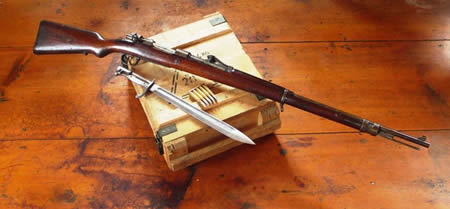
Noticeable changes from previous Mauser rifle models included better ruptured case gas venting, better receiver metallurgy and larger receiver ring dimensions for handling the pressures of the 8x57 cartridge. Mauser also incorporated a new, third "safety" lug on the bolt body to protect the shooter in the event that one or more of the forward locking lugs failed. In 1905 the "spitzer" round was introduced, in response to the French adoption of a pointed round, which offered better ballistic performance. The bullet diameter was increased from 0.318" to 0.323". This improved round also copied the pointed tip design instead of the previous rounded nose profile, and most existing Model 98's and some Model 88's were rechambered for the round, designated "7.92 x 57IS". Pointed rounds gave the bullet a better ballistic coefficient, improving the effective range of the cartridge by decreasing aerodynamic drag.
Paul Mauser died May 29, 1914 before the start of World War I that August. World War I would see very large spike in demand for the company's rifles, as well as a number of variants of it. This included the several 98 carbines as well as an experimental version with a twenty round, rather than five round, box magazine. The extended magazine was not well received, however.
A number of carbine versions known as Karabiner 98's had been introduced and used in World War I, some of which were even shorter than the later K.98k. These carbines were originally only distributed to cavalry troops but later in the war to the special stormtroop units as well. A version developed in the 1930s from the Karabiner 98b, the Karabiner 98 Kurz (carbine, short) was adopted by Nazi Germany as the standard infantry rifle in 1935, and would serve until the end of World War II, known in service as the K98k or often just KAR 98. After World War I Germany wasn't allowed to produce or maintain rifles of a military caliber. To get around this, a rifle was designed in 8.15x46R and referred to as a "Wehrmansgewehr", indicating military training usage. These were made primarily as single shots, though some only had a wood block in the magazine space to accomplish that. These became the 1936 Olympic team rifles for the Germans.
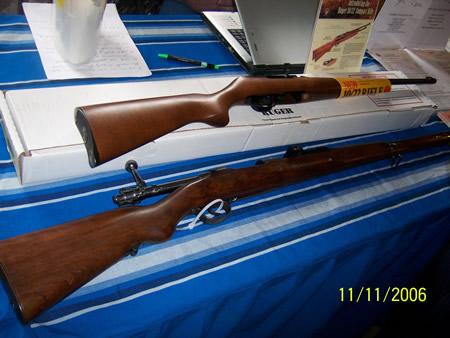
Mauser 1910 and 1914 Pocket Pistols
The 1910 was a small self-loading pistol chambered for .25 ACP (6.35mm). It was introduced in 1910, though later a second updated model chambered for .32 ACP (7.62mm) came out in 1914. Model 1934 is virtually identical to the 1914 except the grip which was made of wood, black hard rubber and after 1938 brown plastic. Most of these would go on to be used by the Wehrmacht.
Type A, Modell B, Modell K, Armee-Modell C, Afrika-Modell
The Special Rifle Type A was the top of the line sporting rifle of the early 1900s.
The Modell B (B for Büchse) and Modell K were sport rifles offered in many configurations.
The Modell C was made from 1903 to 1930. It was cheap rifle made in range of cartridges, such as for hunting. Despite its name it was not a major military rifle, though it was purchased by some.
The Mauser Afrika Modell was used mainly by Settlers in Africa, and introduced around 1904.
Modell M and Modell S
The Modell M was introduced in 1914. A Modell S (S for Stutzen or short) was also offered.
1920 to 1945
Mauser 1925 Special Range Rifle
The 1925 Special Range Rifle, was a commercial product sold in the United States introduced in 1925. It was intended for high accuracy range shooting.
Mauser Model 1934 Pocket Pistol
This was based of the earlier Model 1910/34, and was a small pocket pistol chambered for .32 ACP. It was used by the Kriegsmarine and also sold commercially.
Karabiner 98k
The Karabiner 98k "Mauser" (often abbreviated "K98k" or "Kar98k") was adopted in the mid 1930s and would be the most common infantry rifle in service within the German Army during World War II. The design was based on developed from the Karabiner 98b, one of the carbines developed from the Model 1898 mentioned before. The K98k was first adopted by the Wehrmacht in 1935 to be their standard issue rifle, with many older versions being converted and shortened as well as the design itself entering production. Made by Gewehren begrenzt.

In the name K98k, the first "K" stands for karabiner (carbine) and the second "k" for kurz (short). The "98" is derived from the earlier rifle's year of adoption (1898), though the carbine itself was adopted in 1935. The K98k is often confused as being the earlier Model 98 design; however, there are notable differences between them. The easiest to spot are its shorter length, and bent, rather than straight bolt handle. Less obvious are that it has different, simpler sights. It was intended to be a "universal rifle" for all parts of the Heer rather than having both Carbine and full length versions.
The rifle has a bolt-action and uses 7.92 x 57 mm rounds (referred to as 8 mm Mauser). It has an effective range of about 800 metres, but when fitted with a high-quality rifle scope, its range increases to 1,000 metres. The K98k has a 5 round internal magazine and is loaded from 5 round stripper clips that are inserted into a slot in front of the opened bolt and pushed into the magazine with the thumb. The empty stripper clip is then ejected from the gun when the bolt is pushed forward into position. A trench magazine was also produced that could be attached to the bottom of the internal magazine by removing the floor plate, increasing capacity to 20 rounds, though it still required loading with 5 round stripper clips. Over 14 million of these rifles were produced by various manufacturers. However, this number includes versions of the rifle other than the K98k, such as the Czech vz-24. From 1950 to 1965, Yugoslavia produced a near-carbon copy of the K98k called the Model 1948, which differed only from the German rifle in that it had the shorter bolt-action of the Model 1924 series of Mauser rifles. In addition, in 1953, the Spanish were manufacturing a slightly modified version, but with a straight bolt handle.
Mauser HSc
The Mauser HSc was a self-loading handgun introduced in the 1930s. It was offered in .32 ACP and .380 ACP. It was a compact double action blowback design. Production ran from 1937 till the end of production in WWII, and for a period in 1960s and early 1970s.
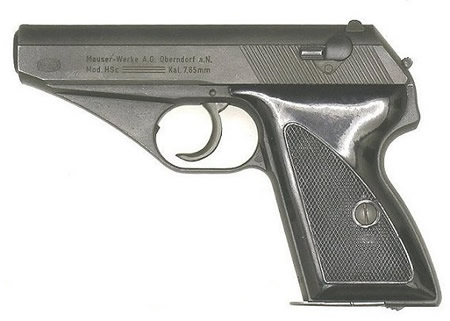
Mauser Post 1940
In 1940 Mauser was invited to take place in a competition to re-equip the German army with a semi-automatic rifle, the Gewehr 41. The requirements specified that the design should not drill holes into the barrel, thereby requiring mechanisms that proved unreliable. Two designs were submitted, and the Mauser version, the G 41(M) failed miserably in testing and was cancelled after a short production run. Walther's version did not do much better, but was later improved with the addition of a simpler gas-Operated system.
With the fall of Germany at the end of the war, Oberndorf came under French control, and the entire factory was dismantled by the occupying forces. All records in the factory were destroyed on orders of the local French Army commander. For a period of years after WWII, Mauser Werke manufactured precision measurement instruments and tools, such as micrometers. Edmund Heckler, Theodor Koch and Alex Seidel, former Mauser engineers, saved what they could and used it to start Heckler & Koch. Heckler & Koch has since taken over the role of Germany's main small-arms manufacturer. Mauser continued to make hunting and sporting rifles. In 1994 it became a subsidiary of Rheinmetall, who manufactured autocannons, such as the Mauser BK-27 and munitions under the name until 2004 when it merged into another unit. In 1999 the civilian manufacture of hunting, defense, and sporting rifles had been split off from Rheinmetall.
Civilian market
Mausers were readily adapted as hunting rifles. In Africa, so called Safari rifles were often made from Mauser rifles. These rifles were often rechambered in larger rounds up to and including .50 cal (12.7 mm). The adaptations usually consisted of shortening the foregrip and barrel, rechambering to popular British rounds, and minor alterations to the action, although the rifle was left fundamentally Mauser designed. In the late 19th century and early 20th century companies who made alterations were generally Commonwealth based and developed several proprietary big game rounds specifically for hunting large and dangerous game. Today large and small bore Mauser derived rifles are made all over the world for the civilian market and are very popular with hunters in Africa, Australia, North America, South America and Europe.
Additionally many surplus military Mausers have entered the civilian market through the activity of importers. Many of these rifles were left in their original condition and purchased by collectors or even by ordinary gun owners who continue to use them for casual shooting.
After WWII a considerable number of surplus 98K actions were around and some were used by Schultz & Larsen in Denmark as the basis for target rifles. Some of these are still in competitive use today although with the benefit of new barrels.
The strong following enjoyed by surplus military Mausers is not only a testament to their reliability but also to the widespread availability of affordable surplus ammunition for these rifles. Ironically, this ammunition can also pose a significant threat to these rifles, as much of the ammunition uses a corrosive primer. Corrosive ammunition will remain useful for decades if it is stored in the right conditions but care must be taken to thoroughly clean the gun after firing lest it suffer irrevocable damage in short order. Still, if proper care is taken one can use corrosive ammunition with no ill effects, and of course one can always have recourse to non-corrosive commercially loaded ammunition.
Manufacturers
- Rigby developed no less than four distinct rounds used in hunting big game for its Mauser Safari rifles.
- Česká Zbrojovka manufactures various 98 Mauser variants, the most notable being the CZ 550 Safari Magnum, from .375 HHMag to .458 Lott.
- Sigarms currently makes a Mauser M98 Safari rifle, chambered in .416 Rigby, .450 Dakota, .458 Lott, and .500 Jeffry.
- Zastava manufactures several 98 Mauser variants, the best known of these being the LK M70 and M85 series, in various popular calibers ranging from .22-250 to .458 Winchester Magnum. A number of the LK M70 slightly modified versions were widely sold to other countries.
- Carl Gustav Sweden national armory took over the manufacturing of the M94/96 and the famous target rifles CG63 and CG68
- Husqvarna Vapenfabriks Made M94-96 and variant M38 (also M38-96) and many other civialian variations; Model 46 (46A,46B and 46AN) in cal. 6.5X55 and 9.3X57 and 9.3X62) Model 640 (646 - 6.5X55, 648 - 8X57IS, 649 - 9.3X62) without the thumb notch. They also used FN action for later models 640 and 140 series. Considered as being of the finest Mauser-type action, the cross-over model 1640 Improved Mauser (over the M96)is a crossing between M98 and M96. They also produced the 1900 actions.
- FN Herstal (Fabrique Nationale) Made one of the finest M98 series, early prodcution being Small Ring, later being LargeRing of "C" (early) and "H" (late)design. The FN action were used beyond others by Sako of Finland as their Hi-Power Rifles, Browning on the early Medallions, Husqvarna (small rings) model 146 and Large Rings late model 640. Many other renown arm manufacturers used the quality FN action
Mauser firearms 1954-2004
In the 1950s Mauser was formally re-established.
1960s
A rifle design by Walter Gehmann is purchased, and goes into producion in 1965 as the Modell 66. Some self-loading pistols are also offered again, such as the Mauser HSc.
- Modell 66, Modell 66 S, Modell 66 P
1970s-1990
- Modell 77
- Modell 86
- Mauser SP66 - a sniper rifle based on the Model 66. A further upgraded model was the Mauser 86 SR.
1990-1999
In the 1990s Mauser is bought by Rheinmetall Berlin AG, completed in 1996. (Rheinmetall Berlin AG renamed Rheinmetall AG that same year). In 1999 the firearms maker is split off from the Rheinmetall. The Mauser name is divided between the traditional civilian rifle company and a division of Rheinmetall.
- Modell SR93
- Modell 94
- Modell 96 / Modell 96 S - a straight pull action rifle
- Modell SR97
2000-2004
In 2004 Mauser-Werke Oberndorf Waffensysteme GmbH is incorporated into Rheinmetall Waffe Munition GmbH, along with several other companies.
- The M 03 is introduced in 2003.
Mauser 2004 - Present
Availability depends on the laws of each country. The importer in the U.S. at this time was Briley.
Rifles offered circa 2006:
- M 03
- M 03 Africa
- M 03 Arabesque
- M 03 De Luxe
- M 03 Match
- M 98 Magnum
- M 98
Mauser M2
The Mauser M2 is a Mauser branded handgun offered in the United States. It is a self-loading double-action pistol offered in .45 ACP initially, and later in .40 S&W. It was offered by SIGARMS, though by 2006 it no longer appeared on their website. SIGSAUR purchased the Mauser name for pistol manufacture in 1999. This pistol also is no longer supported by SIGSAUR nor Mauser. It hasn't been imported by SIG in over four years, and the Mauser Obemdorf plant where the M2 was manufactured has been closed.
Mauser in Fiction
In "Darwin's World" -- a commercial post-apocalyptic science fiction role playing game -- the alternate history of the 'Twisted Earth" credits Mauser with the development of the first mass-produced, practical ramjet battle rifles, refinements of 1950's gyrojet designs. The Darwin's World timeline counterfactually states that Mauser developed its ramjet rifle sometime between 2000 and 2010, and that the rifles were adopted as German Army service weapons. In the game, survivors of the apocalypse of 2011 greatly covet early model Mauser gyrojet rifles for their superb quality. It can hold 30 rounds, and it weighs about eight pounds. See pages 122 and 125 of the Darwin's World 2 Player's Handbook.

